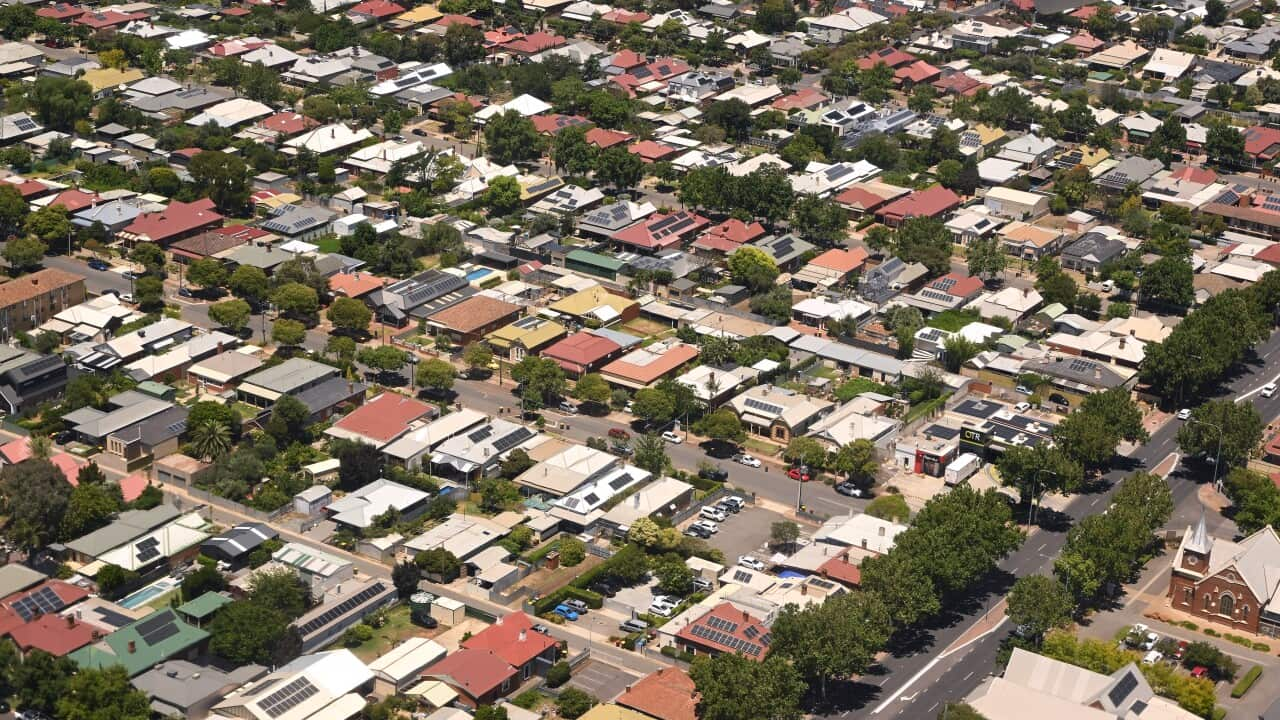Stuart Applebee has been growing potatoes in north-west Tasmania for decades.
Potato mop top virus isn't the first disease he's dealt with.
Hearing it has made its way into his state was a blow, but he's hopeful it can be managed.
"Like any new virus, it's quite concerning when you know you're probably the first state to be detected in the country with it. Once we found out a little bit more out of New Zealand and a couple of other countries that are dealing with it, that probably relaxed my own thoughts a little bit."
Potato mop top virus isn't a threat to human health, but it can affect the skin and flesh of potatoes and impact crop yields.
It was first detected on a farm in north-west Tasmania in July, also marking the first time it's been found in Australia.
Testing in Tasmania ahead of planting saw 1,700 tonnes of infected seed potatoes destroyed, with calls for a federal assistance package for affected farmers.
TasFarmers CEO Nathan Calman says concerns also remain about how it got here.
"The most concerning thing about the mop top incursion into Tasmania is that this isn't just the first time the virus has been detected in Tasmania, but it's also the first time that it's been detected within Australia. So its presence here represents a failure of our national biosecurity protocols, but also our state biosecurity protocols."
Stuart Applebee says steps need to be taken to avoid a repeat.
"We have these rules and regulations in place, and somehow things are coming in. We're not that far away from having a major outbreak of something here, if this is going to be a common practice."
A spokesperson for the Federal Department of Agriculture, Fisheries and Forestry told SBS the current government has committed an extra $2 billion to resourcing the country's biosecurity system since it came to power and that the system is “world-leading.”
Biosecurity Tasmania says it has not yet been able to confirm – and is unlikely to be able to confirm – when or how potato mop top virus arrived in Tasmania.
But a spokesperson said efforts so far to trace the source indicate it could have been present in Tasmania for at least two years.
Australia's chief plant protection officer, Dr Gabrielle Vivian-Smith, was questioned about the incursion by Tasmanian senator Richard Colebeck in Estimates last week.
"Potato mop top virus is believed to have been in the country for at least two years based on what we know in terms of tracing at this point. But it's not known exactly how it arrived in Australia, it potentially could have come in on a number of different pathways."
Biosecurity Tasmania said the virus has been detected across multiple sites - including growing sites, a research site and storage facilities.
The only detection on the mainland to date is in seed potatoes in cold storage in Victoria.
That state, as well as New South Wales and South Australia, has placed restrictions on the movement of unprocessed potatoes and production equipment from the Apple Isle.
A national committee last month decided the virus was not eradicable in Australia.
Zarmeen Hassan is the biosecurity manager for the peak representative body for the potato industry, AUSVEG.
She says if it's been in Tasmania for two years, there is a concern it's already spread to the mainland.
"So far we know that it's only in Tasmania, right? We don't actually know whether it has spread to the mainland. If it has not spread to the mainland, then obviously the industry and government want to work towards containing it."
Across the Tasman, New Zealand has been dealing with mop top for seven years, after it was found at a processing plant on the South Island in September 2018.
New Zealand also determined it could not be eradicated, but Potatoes New Zealand CEO Kate Trufitt said management is going well — so far.
"We’re not seeing any impact. Our processes monitor it and report back if we see any (effects). So we're not really seeing that impact at all. We're not seeing lost yields, we're not seeing anything. But they do call it the sleeping disease, so something for us to be aware of is that something could happen in the future. So we do need to be looking to the future and whether we do more surveys. We look to resistant varieties. And we do get advice from international players because it is worldwide."
She said washing down of machinery when moving between farms, crop rotation and improving soil health were crucial in preventing the disease.
Another disease found in potatoes – powdery scab – is a known vector of potato mop top virus, helping it to spread.
The Tasmanian government is investing $200,000 into a research program looking into powdery scab and mop top.
Zarmeen Hassan said powdery scab is found across the country.
"Powdery scab is prevalent in the country across all the growing, majority of the growing regions. And if that's the case, then it may be further than Tasmania. We don't know that, it's a bit of an unknown right now."
Mop top and powdery scab can both remain dormant in soil for years, even without a potato crop.
There’s currently no soil test to detect powdery scab or mop top but work is underway.
"At this point, there isn't a soil testing protocol and methodology in place in Australia. It is being worked on but planting season is starting now, so it won't be available for this planting season; it will be available for the next season."
Planting the next crop of potatoes is getting underway in Tasmania, but ongoing rain means for some, including Stuart Applebee, the ground is still too wet.
Despite this and other challenges, he can't imagine doing anything different.
"There is no better feeling than growing a crop of whatever — it can be carrots, potatoes, peas — and knowing full well that it's of the highest quality product."













